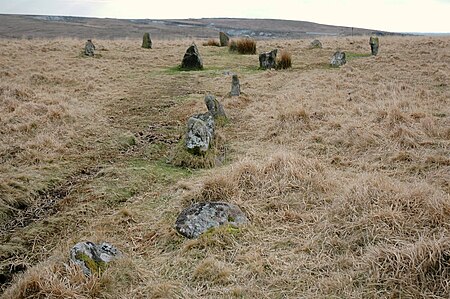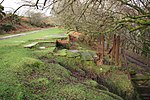Ringmoor stone row and cairn circle
Archaeological sites on DartmoorMegalithic monuments in EnglandStone circles in Devon

Ringmoor stone row and cairn circle (grid reference SX563658) is a prehistoric stone row and cairn circle on Ringmoor Down in Devon. It is located three miles east of the A386, northeast of the village of Shaugh Prior. It is three hundred metres north from Brisworthy stone circle, and is one of the archaeological sites found in the Upper Plym Valley.
Excerpt from the Wikipedia article Ringmoor stone row and cairn circle (License: CC BY-SA 3.0, Authors, Images).Ringmoor stone row and cairn circle
Portland Lane, West Devon
Geographical coordinates (GPS) Address External links Nearby Places Show on map
Geographical coordinates (GPS)
| Latitude | Longitude |
|---|---|
| N 50.474821 ° | E -4.025792 ° |
Address
Ringmoor Down Stone Circle
Portland Lane
PL20 6PQ West Devon
England, United Kingdom
Open on Google Maps









